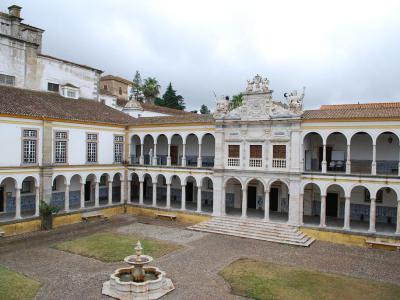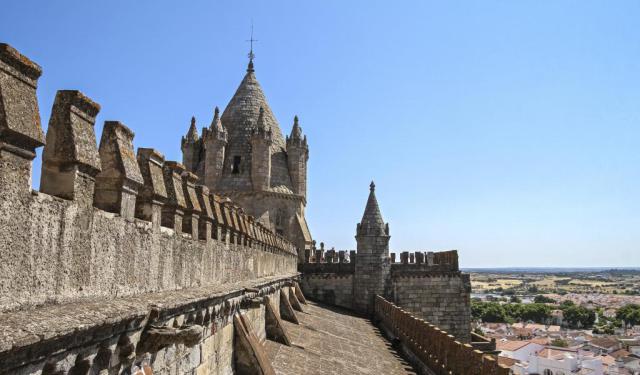
Universidade de Evora (University of Evora), Evora
The University of Évora holds a remarkable legacy as the second oldest university in the country. Its establishment in 1559 by Cardinal Henry, who would later become the king of Portugal, along with the approval of Pope Paul IV, conferred the institution with university status. It's a testament to its enduring significance that this historical moment is chronicled in the papal bull Cum a nobis.
The university's early years were shaped under the patronage of the Society of Jesus, more commonly known as the Jesuits. This affiliation with the Jesuits played a pivotal role in both the university's rise to scholarly prominence and its eventual trials during the Marquis of Pombal's Jesuit suppression. The Marquis of Pombal's decree led to the university's closure in 1779, accompanied by the imprisonment or exile of its faculty members.
However, the spirit of education persisted, and after almost two centuries, the university was revitalized in 1973 as the Instituto Universitário de Évora (University Institute of Évora). This rejuvenation was orchestrated by José Veiga Simão, the Minister of Education at the time, as part of broader educational reforms aimed at reshaping higher education in Portugal. By 1979, the institution reclaimed its original name, Universidade de Évora, marking the culmination of its resurrection.
The university's historic significance is not only rooted in its age but also in its rich academic contributions. The Colégio do Espírito Santo, the university's historical college, flourished as a center of learning and scholarly excellence, rivaling even the famed University of Coimbra. The institution nurtured a cadre of eminent theologians, philosophers, and thinkers, including figures like Luis de Molina, Pedro de Fonseca, St. Francisco de Borja, St. João de Brito, and Manuel Álvares.
The university's early years were shaped under the patronage of the Society of Jesus, more commonly known as the Jesuits. This affiliation with the Jesuits played a pivotal role in both the university's rise to scholarly prominence and its eventual trials during the Marquis of Pombal's Jesuit suppression. The Marquis of Pombal's decree led to the university's closure in 1779, accompanied by the imprisonment or exile of its faculty members.
However, the spirit of education persisted, and after almost two centuries, the university was revitalized in 1973 as the Instituto Universitário de Évora (University Institute of Évora). This rejuvenation was orchestrated by José Veiga Simão, the Minister of Education at the time, as part of broader educational reforms aimed at reshaping higher education in Portugal. By 1979, the institution reclaimed its original name, Universidade de Évora, marking the culmination of its resurrection.
The university's historic significance is not only rooted in its age but also in its rich academic contributions. The Colégio do Espírito Santo, the university's historical college, flourished as a center of learning and scholarly excellence, rivaling even the famed University of Coimbra. The institution nurtured a cadre of eminent theologians, philosophers, and thinkers, including figures like Luis de Molina, Pedro de Fonseca, St. Francisco de Borja, St. João de Brito, and Manuel Álvares.
Want to visit this sight? Check out these Self-Guided Walking Tours in Evora. Alternatively, you can download the mobile app "GPSmyCity: Walks in 1K+ Cities" from Apple App Store or Google Play Store. The app turns your mobile device to a personal tour guide and it works offline, so no data plan is needed when traveling abroad.
Universidade de Evora (University of Evora) on Map
Sight Name: Universidade de Evora (University of Evora)
Sight Location: Evora, Portugal (See walking tours in Evora)
Sight Type: Attraction/Landmark
Guide(s) Containing This Sight:
Sight Location: Evora, Portugal (See walking tours in Evora)
Sight Type: Attraction/Landmark
Guide(s) Containing This Sight:
Walking Tours in Evora, Portugal
Create Your Own Walk in Evora
Creating your own self-guided walk in Evora is easy and fun. Choose the city attractions that you want to see and a walk route map will be created just for you. You can even set your hotel as the start point of the walk.
Evora Introduction Walking Tour
Nestling in the sun-drenched Alentejo region of Portugal, Évora is a timeless gem in the heart of the country and one of its oldest and most enchanting cities.
The city's history spans over 5,000 years. The name Évora originates from the Celtic word "ebura," which means "of the yew trees."
The Romans conquered the place in 57 BC, shaping it into a vital town at... view more
Tour Duration: 2 Hour(s)
Travel Distance: 3.3 Km or 2.1 Miles
The city's history spans over 5,000 years. The name Évora originates from the Celtic word "ebura," which means "of the yew trees."
The Romans conquered the place in 57 BC, shaping it into a vital town at... view more
Tour Duration: 2 Hour(s)
Travel Distance: 3.3 Km or 2.1 Miles

